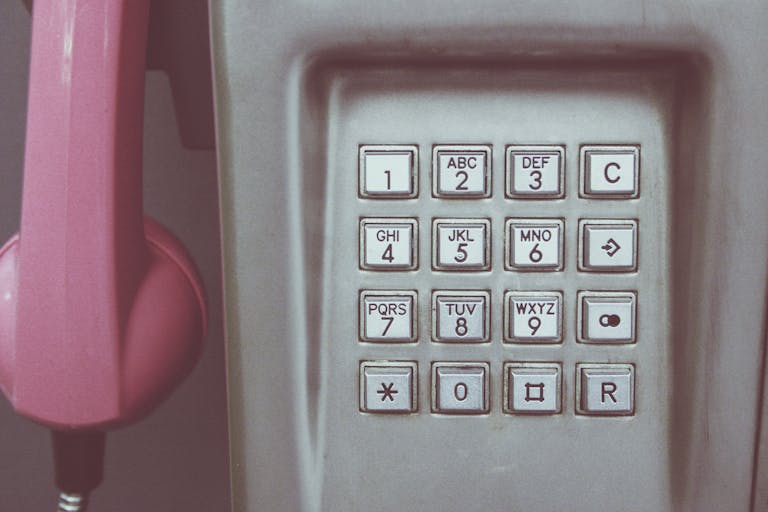Why Writing in First Person is Your New Favorite Storytelling Hack
Why stepping into a narrator’s brain is the most honest kind of fiction—and the most fun.
You’re probably not new to writing your stories in the first person. But I’m gonna give my own attempt at mansplaining it to you anyway. (Judging by how interested you were in the title, I’m hoping you don’t mind my use of the word mansplaining… What’s the feminine equivalent? Ma’amsplaining? I mean. It’s not technically mansplaining if I’m right, so… 👀)
Writing in first person is like handing your brain a megaphone and saying, “Go ahead, overshare.” It’s unfiltered, slightly feral, and weirdly poetic—kind of like drunk karaoke but with grammar. It’s the literary equivalent of FaceTiming your best friend at 11:48 p.m. to scream about a dream you had where your ex turned into a duck. It’s chaotic. It’s intimate. It’s glorious.
And honestly, my whole internal monologue is already written in first person. Every memory, meltdown, and mildly traumatic grocery store moment gets narrated by my own 12 voices inside my head, with a level of drama that deserves a soundtrack. (Don’t lie. You do this too.)
Let me explain.
One time, I went to the store with my kid. My kid ran straight to the bakery section. We’ve only just started reciting his ABCs at night, like some frantic bedtime ritual, whispering to the alphabet gods to please make him preschool-ready. A for Apple. B for Ball…
At the grocery store, he saw “B for Bread!” and like a holy revelation had struck him in aisle three, he sprinted toward the loaves, locked eyes with one at his exact toddler height… and bit it. Through the plastic.
And let me tell you—I completed exactly 46 mental cartwheels in the span of two minutes. Pride (he recognized a letter!), awe (look at the spark in his eyes!), panic (I’m about to buy a loaf of dry, joyless whole wheat bread I didn’t want), regret (why not bite a bagel, child? A croissant? Something buttery??), and then—laughter. Big, seismic laughter that I swear briefly reclassified Calgary as an active earthquake zone.
This is why I love writing in first person. Because my stories hit different when I can hand-deliver them from the inner furnace of my own chaotic mind. My voice, my reactions, my baby’s rogue snack attack—it all flows with a kind of emotional clarity I can’t fake. First person lets me write like I’m giving you the most unhinged voice note of your life. And you’re welcome.

But let’s break down why first person is actually a literary superpower in disguise:
🧠 1. First Person Creates Instant Intimacy
Writing in first person is like giving someone a spare key to your brain and saying, “Here, move in. It’s a mess, but it’s all yours.” It bypasses the clinical detachment of third-person and gets straight to the warm, beating heart of a character’s inner world.
It doesn’t feel performative. We don’t just watch a character cry—we feel the salt sting their cheeks. We’re not observers; we’re co-conspirators.
Examples:
- “I wanted to cry but no tears came out. It’s as if my body didn’t allow me to surrender to defeat. But that’s all I wanted to do. I wanted to let go. — Me, just now. (I’m okay, I promise)
- “Sometimes I can feel my bones straining under the weight of all the lives I’m not living.” — Jonathan Safran Foer (Okay, he said it better than me, ngl. But, same Johnny. Same.)
🎭 2. It Feels Emotionally Real (Even When It’s Not)
Even if your story is made up—like, aliens-on-a-submarine made up—first person gives it emotional realism. Because the narrator’s experience feels true. Their anxiety, joy, grief, thirst for revenge, or midlife spiral is processed in real-time.
Readers connect with the feeling, not just the facts.
Examples:
- “We flew through the cosmos, and all I saw were blurs of diamonds as we swooshed past them. I had front row seats to the creation of every living, breathing, star. But all I could feel was gravity centering itself at the bottom of my chin. ” — Me again. Hello
🌀 3. It Blurs the Line Between Fiction and Memory
First person narration has this eerie power to make things feel autobiographical, even when they’re not. It creates this delicious tension—is this story real? Is the narrator just the author in disguise?
The intimacy creates a kind of false memory in the reader, like you were there, even if you weren’t.
Examples:
- “The white fence came into view, and the smell of my mother’s beef and mushroom stew grew stronger as I approached my childhood home.” — Hello, it’s me.
🎙️ 4. Voice Isn’t Just a Tool—It’s a Whole Damn Character
First person lets you get weird with voice. Sardonic, overly dramatic, poetic, naive, manic pixie dream philosopher—it all works. It’s where personality becomes the plot.
Even if the plot’s slow, readers will hang on just to hear the narrator spiral about their ex, their taxes, or the absence of cream on the table for their coffee.
This technique is so effective, you can even jump from one character’s first-person perspective to another’s within the same storyline—and maintain momentum. In fact, it adds richness. Because let’s be real: no two people experience the same moment the same way. One might see betrayal; the other sees a funny misunderstanding. One might think they’re in love; the other’s just being polite. That gap? That contrast in perception? That’s where the gold is.
So, here’s an example of how this might play out.
Example: Same scene, different narrators
- Narrator 1: Heather
I made her coffee. The nice kind, too—the Colombian roast I was saving for guests who actually matter. I even used the heart mug because I knew she’d read into it. She always does. Let her think I’ve forgiven her. Let her sip that caffeine and hope. It costs me nothing to let her spiral on her own time. Besides, caffeine pairs well with delusion.
- Narrator 2: Marie
She made me coffee. She forgave me. I knew she would! I could tell the second I saw the heart mug. She picked that on purpose—I mean, you don’t just accidentally pick the mug that says “you matter” in porcelain. She even smiled (kind of). Maybe we’re back to being close again. I’ll say something funny later and she’ll laugh, and things will go back to how they used to be. I love this version of us.
🤡 5. It Embraces Contradiction and Unreliability
People contradict themselves all the time. And honestly, so should narrators. First person gives you permission to be deeply flawed, unreliable, and human. The narrator can lie to us, misremember things, or change their mind entirely—and that makes them realer.
It also makes them funnier, messier, and way more interesting.
Examples:
- “But during the winter of 2012, I believed that I was immune to stress; that whatever was happening to me was some kind of endurance test that I’d obviously ace – despite having no real plan, or income, or access to vitamins.” — Anne T. Donahue, “Nobody Cares”
- “I’m not crazy. My reality is just different from yours.” — Lewis Carroll
⚡️And a Final Thought Before You Go
So yeah, maybe first person isn’t for everyone. But if you’ve ever narrated your life in the shower like it’s a Hallmark romcom, rehearsed conversations you’ll never have, or cried while writing your Notes app like it’s a sacred scripture—you’re already doing it. First person is your native tongue. Welcome home.
📚 Want more chaotic wisdom on writing, storytelling, and slaying your WIP?
Follow AlonTala Publishing on Facebook for writing tips, new releases, and magical bookish chaos.
Join the AlònTala Readers & Writers Group on Facebook — we’re friendly, slightly unhinged, and totally obsessed with stories like yours.
Subscribe to our Substack pages for ✨ bonus rants, spicy writing prompts, and behind-the-scenes fiction bits:
Indie From the Islands on Substack (Mariel’s)
Daydreams for Breakfast on Substack (Pasta’s)
Have questions? Suggestions? Profess your undying love and affection for a member of the team? 👀 We listen and we don’t judge. Send us an email at hello@alontala.com
Want to read more? Click here to read more of AlònTala’s chaotic creative fun blogs!


